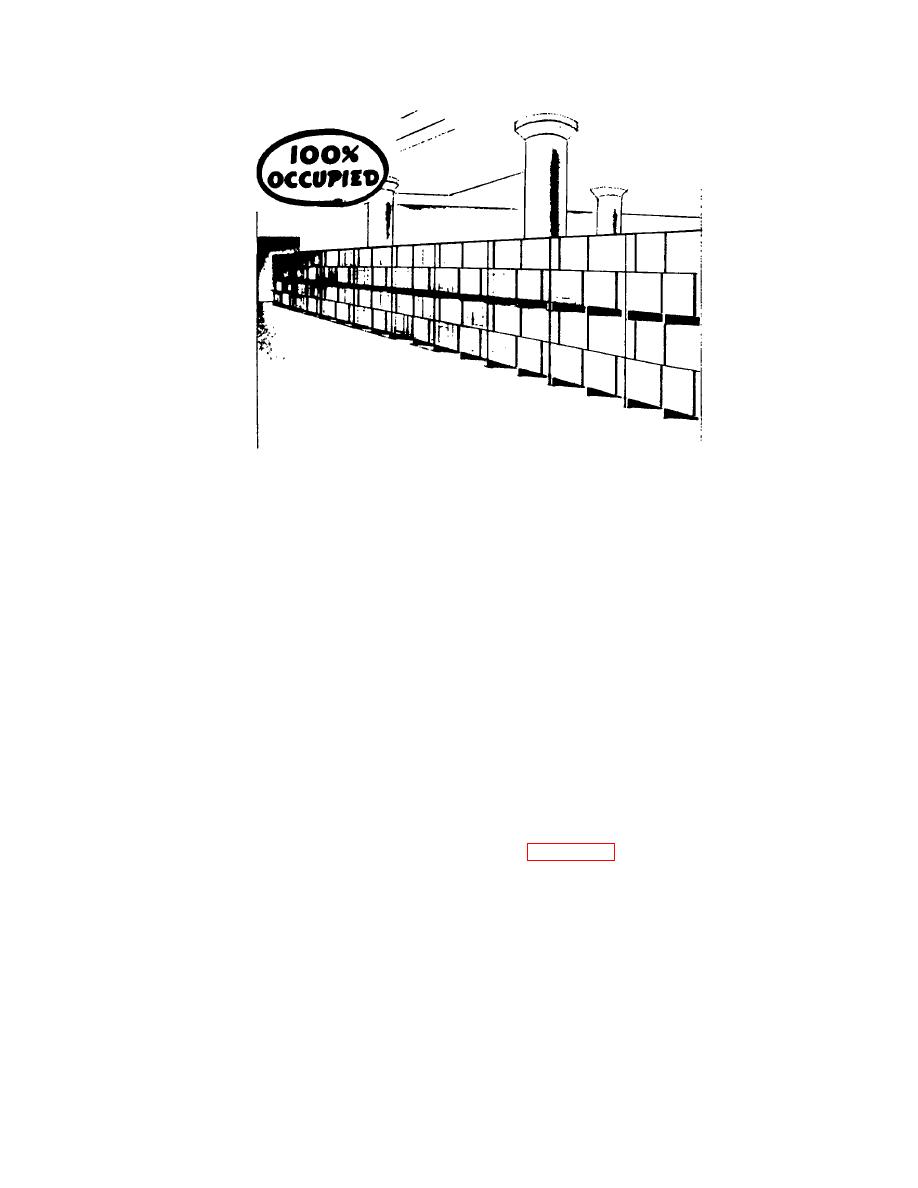 |
|||
|
|
|||
|
Page Title:
Guide for computing occupied and vacant Space |
|
||
| ||||||||||
|
|
 TM 38-400/NAVSUP PUB 572/AFMAN 23-210 MCO 4450.14/DLAM 4145.12
Figure 2-57. Battery Storage in a Multistory Building
(b) Potential vacant space, type A, is
f. Guide for computing occupied and vacant
that portion of occupied net usable space which is
space.
temporarily not used for storage because of space voids
(1) During storage space surveys, estimates
in front of stacks of material (honeycombing) or space
and computations will be based upon pallet sizes and
voids at the height of stacks which can be made
square feet grids occupied by each, including overhang
available by rewarehousing or utilization of maximum
and space between pallet tiers. The factors to use for
heights in stacking. In computing potential vacant
various pallet sizes are
space on the floor, the following criteria is applicable:
(a) 32 inches x 40 inches = 12 square feet.
1 Distance less than 6 inches will
(b) 40 inches x 48 inches = 16 square feet.
be disregarded (e.g., 5 in = 0 ft; 1 ft 4 in = 1 ft).
(c) 48 inches x 60 inches = 26 square feet.
2 Distances in excess of 6 inches
(d) 48 inches x 72 inches = 31 square feet.
will be figured as 12 inches or 1 foot (e.g., 9 in = 1 ft; 1
(e) Other size pallets will be computed by
ft 7 in = 2 ft).
multiplying the length plus 6 inches (2 in on each side
(c) To compute type B potential vacant
for overhang plus 1 in on each for space between tiers)
space, count the voids when maximum stacking heights
times the width plus 6 inches.
are not achieved and can be recouped by
rewarehousing. Multiply the number of void spaces by
(2) To determine whether a partially loaded
the cubic feet of each stack. The cubic feet of each
pallet is to be counted as full or empty, the standard will
stack is computed by multiplying the square feet factors
be a loaded pallet of a particular item and the following
for each pallet (see para f(1l) above) by the height of the
computation will be made:
pallet. Figure 2-58 provides an example of computing
type B potential vacant space. In this example, each
(a) Pallet containing less than 50
stack of type B potential vacant space is equal to 64
percent of an item will be considered as empty.
cubic feet (16 sq ft per 40by 48-in pallet multiplied by 4
(b) Pallet having more than 50 percent
ft high per pallet). In row B, there are two void spaces
of an item will be counted as full.
which equal 128 cubic feet (64 cu ft per stack multiplied
(3) Difference between "actual vacant space"
by two stacks). This method can also be used for the
and "potential vacant space"
depth of stacks. For example, if row B were two deep,
there would be 256 cubic feet of type B potential vacant
(a) Actual vacant space is the floor
space (64 cu ft per stack multiplied by two stacks high
area of net storage space which is not occupied by
multiplied by two stacks deep).
materials or storage bins.
DO NOT INCLUDE
POTENTIAL VACANT AS VACANT SPACE.
2-59
|
|
Privacy Statement - Press Release - Copyright Information. - Contact Us |